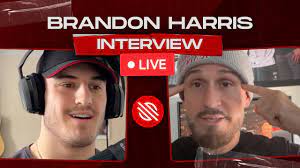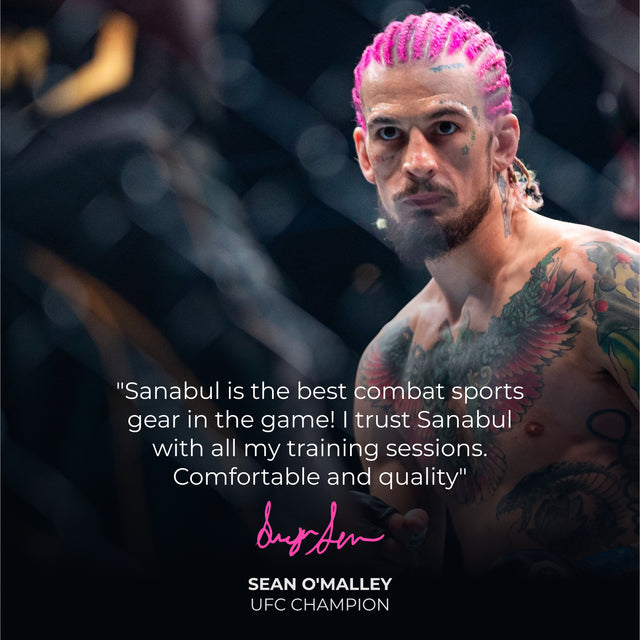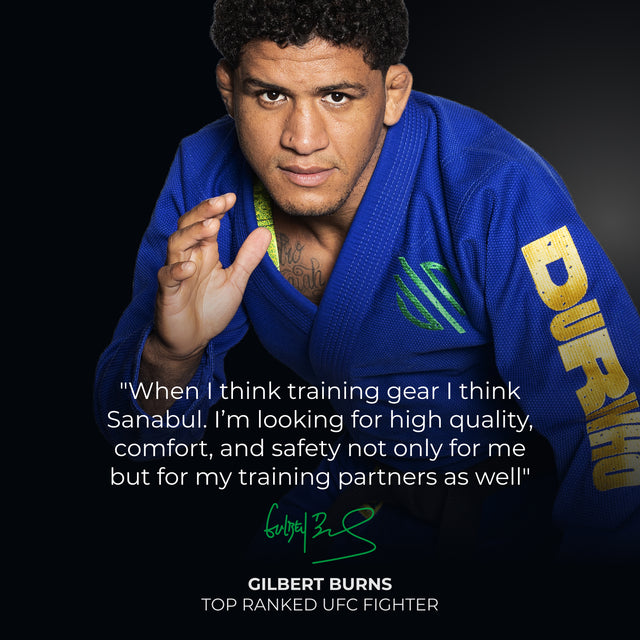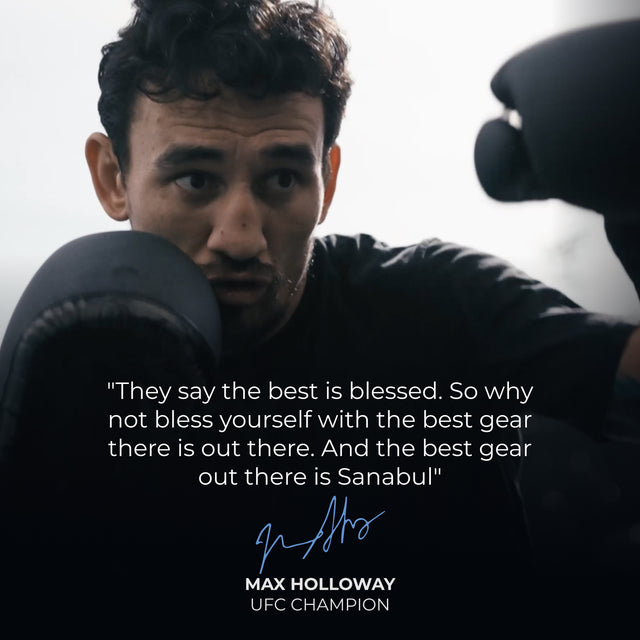Sanabul Fight Buzz notes: Interview with Brandon Harris
Full interview can be found here
Introduction - Brandon Harris (0:43 - 1:39)
- Brandon Harris is a performance coach who operates out of Arizona. He works with a variety of different people, from MMA fighters to professional baseball to football players to the “everyday” person.
Performance Coach vs Strength and Conditioning Coach (1:40 - 2:44)
- Brandon does more than just strength and conditioning. To be the best version of yourself, he says you need to do more than just strength and conditioning. He focuses on different aspects of life and human performance to help his clients improve to the next level of progression.
Being Present (2:45 - 6:22)
- Brandon has the ability to slow things down and be present .
- Not everyone has the ability to be a world-class athlete. You have to put in thousands of hours of work.
- What separates the very elite from the elite is the ability to be present.
- Sean O’Malley has an incredible ability to be present: embracing emotions and harnessing these different energies to successfully perform at the highest level of mixed martial arts.
- For mma fighters specifically, being present isn’t enough on its own. You will still have to train hard across different disciplines in striking and grappling.
- Once you have done the hard training to acquire the skills to a level you believe is adequate, then trusting and surrendering to yourself (knowing you have done what you’ve needed to do) can play a big role in whether or not you have success
Brandon’s training style compared to other coaches (6:23 - 10:22)
- Other coaches have started to incorporate other, lesser-used practices into their training models.
- Specifically, he says the breath is becoming more mainstream, whereas he has been integrating breathwork for over 10 years to regulate the nervous system and help find a deeper presence within his clients
- Brandon believes that the conventional knowledge and modern science that he learned to become a CSCS (certified strength and conditioning specialist) is a great base for understanding and trying to create physiological and/or movement adaptations
- ex. If someone is overextending in a movement, this background can help them coach their client to become more efficient so that they can assume proper form and mitigate the risk of injury
- When it comes to specific people, Brandon has to personalize training and find adaptations that he believes will help his athletes improve to another level.
- As he gained more experience, he soon realized that the CSCS model is not a “one size fits all” approach.
- While he thinks it is a good foundation for S&C and performance coaches to have, the end-goal of the athlete would dictate whether or not force-production is a good measure for success.
- In certain sports like weightlifting, the athlete that produces the most force will win. In other words, if you lift more weight than everyone else, you will win. Force-production is the ideal measure for success here.
- In other sports, like mma and baseball, producing the most force will not determine the degree of success you will have. Force-production is not the ideal measure for success here; the skills in each sport would matter more (striking and grappling for mma; hitting, fielding, and pitching for baseball).
- What good will the abilities related to force production be, if you don’t have the skills to use them at the right time?
- For athletes, their ability to produce, accept, resist force matters. But this capability does not always mean they will win. If you can’t properly use the force you produce, then the amount you produce may not matter.
- Ex. someone punches incredibly hard, but they rarely hit the target
- Ex. baseball player throws or swings with immense power, but they never throw on target or connect with the pitch
- Force production can definitely help in certain cases (striking power, grappling strength). But in skill-based sports, the skills matter more.
- Brandon always looks for what he can do to help his athletes be more successful.
- Working on mindset and nervous system regulation are two things at the top of his priority list.
- Traditional strength and conditioning training can help facilitate growth for athletes in these areas, while still allowing them to experience benefits of the actual strength and conditioning
S&C for Combat Sports (10:23 - 15:22)
- Zak brings up the issue that some combat sports athletes neglect strength and conditioning training as a whole (likely in favor of skill-development). Following this, he asks Brandon how and where a fighter who doesn’t do any S&C can start from the ground up.
- Brandon makes the point that combat sports athletes, mma fighters specifically, have so much to focus on when it comes to developing their skills.
- Since there are so many elements that they have to be proficient at, he says that S&C should not be the primary focus.
- In some cases, some athletes may even benefit from not doing it.
- Surprising answer from a performance coach, but one that makes some sense after his explanation. “If you’re taking away valuable time from getting better at the sport [with] weight training, then that doesn’t make sense” (11:11 - 11:33)
- For professionals whose job is to fight and whose income relies on their performances, they have more time to do more S&C than amateur fighters. For amateurs, Brandon suggests that a good starting protocol for S&C training would be the following:
- Two days / week
- Full body workouts
- Focus on fundamental movements, controlled patterns, full range of motion, pushing and pulling exercises
- Load muscle and tissue, not joints
- Building a base of tissue tolerance to help support the beating your body takes during training
- From here, athletes can focus on specific adaptations that they want to improve and progress from this starting guideline.
- Brandon also mentions that S&C could add unwanted stress into an athlete’s system.
- While you need stress to facilitate adaptation, he says too much stress may be detrimental to growth and could even lead to injury.
- Athletes need to know their own bodies and adjust their training based on how they feel
Breathing and breathwork (15:29 - 17:30)
- “What I see in elite athletes and humans in general is that the most fundamental movement pattern we possess is how we breathe. And it’s rare that it’s done efficiently”
- Efficient breathing isn’t that hard to teach, which makes proper breathing technique a good place to start for breathework.
DIfferent body types and athlete capabilities (17:36 - 24:20)
- Michael Chandler and Sean O’Malley (two high level mma fighters and elite athletes that Brandon has personally worked with) have very different body frames.
- Brandon looks at how each athlete produces force. Some athletes are more vertical, while others are more rotational.
- Brandon says Chandler and O’Malley are outliers on the opposite ends of the spectrum; a guy like Chandler is as far as you will see vertical, a guy like O’Malley is as far as you will see rotational.
- Chandler is super explosive, springy, and really good when it comes to producing force in the gym.
- O’Malley won’t be as good when it comes to pure force production, comparatively. Brandon says the focus for a guy like Sean would be resisting rotation, getting him to rely less on joints for stability, and using more muscle so that he’s not always rotating and jamming joints.
- Brandon makes it clear that if a strength coach doesn’t understand and/or appreciate the different body frames, they can really mess people up, trying a “one-type fits all” approach because certain method works better
- In Brandon’s opinion, mma is the ultimate hybrid sport because you need endurance, power, skill, and sharp mental focus
- So for this sport, the guys who are stocky, super explosive, extremely powerful, and on paper, should win, aren’t necessarily as successful as people with other types of builds (like Sean’s frame).
Preparing for a difficult opponent (24:21 - 31:00)
- Scale everything up - do more
- Incrementally increase the amount of stress
- Tips:
- Have a good fitness base
- Stay in shape (even out of camp)
- “It pays to just be healthy”. The healthier you are, the better you will feel in everything - both physically and mentally (27:14 - 27:44)
- Fuel your body properly with quality nutrition
- Allow your body to recover properly with adequate rest
- Low aerobic work (zone two)
- “Everything is connected” (29:39)
- Eat badly (fast food), how do you feel?
- Eat well (whole, natural foods), how do you feel?
- How does this feeling translate and influence everything else?
- Not staying healthy only makes everything harder on yourself
Closing remarks (31:01 - 33:35)
Brandon Harris Instagram (@higher__human)
Brandon Harris Youtube (@higherhumanperformance2923)
Please consider subscribing to the Sanabul youtube channel for more interviews and updates in the combat sports world. Thank you for reading up to this point and for watching the interview - your support really means a lot to us!





0 Comments
There are no comments for this article. Be the first one to leave a message!